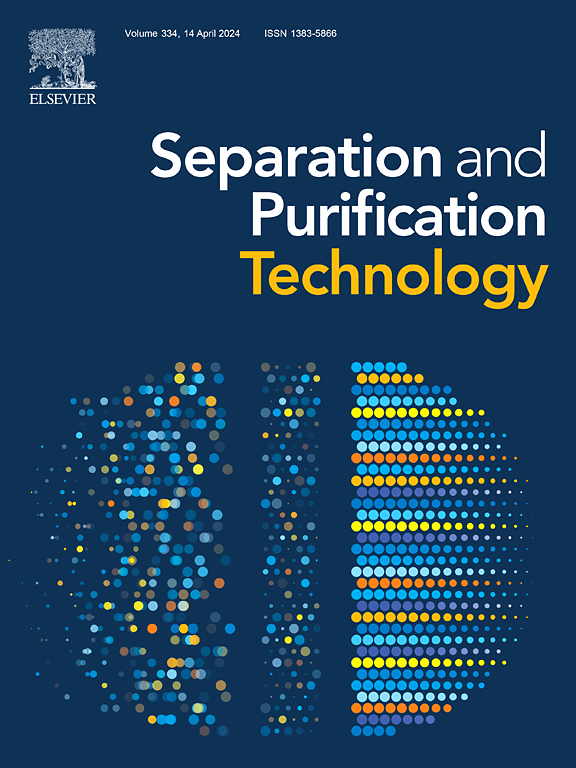Engineering multifunctional and robust superhydrophilic nanofiber contamination resistance membranes for ultrafast oil–water separation
IF 8.1
1区 工程技术
Q1 ENGINEERING, CHEMICAL
引用次数: 0
Abstract
The high demand for super-stable, environmentally friendly and multifunctional filtration membranes remains an unsolved challenge in practical complex oily wastewater treatment systems. Here, we proposed on-demand superhydrophilic and contamination resistant PLA@PAN/NiCo-LDH by facile secondary electrostatic spinning technology. The results showed that the membranes can reach ultra-high flux for various oil-in-water emulsions, the n-hexane-in-water emulsions flux can up to 12,316 L·m−2·h−1·bar−1. Meanwhile, the membranes can effectively degradate of dye wastewater in a short period of time. Most importantly, PLA@PAN/NiCo-LDH maintain outstanding stability under a variety of harsh conditions, even after 30 days of immersion in strong acids, bases and high salt concentrations, as well as under UV radiation, the separation performance of PLA@PAN/NiCo-LDH still remain unchanged. The as-prepared membranes exhibited good contamination resistance, nearly complete oil rejection (>99 %) and flux recovery up to 89.2% after a continuous 30-cycle operation. Due to the biodegradable properties of the membrane material itself, waste membranes can be efficiently recycled. Surprisingly, the recovered PAN/NiCo-LDH functional layer can be recovered again by electrostatic spinning technology. Overall, the combination of PLA, PAN and NiCo-LDH created a multifunctional surface which induces superhydrophilic character and can be used future practical oily wastewater treatment.


求助全文
约1分钟内获得全文
求助全文
来源期刊

Separation and Purification Technology
工程技术-工程:化工
CiteScore
14.00
自引率
12.80%
发文量
2347
审稿时长
43 days
期刊介绍:
Separation and Purification Technology is a premier journal committed to sharing innovative methods for separation and purification in chemical and environmental engineering, encompassing both homogeneous solutions and heterogeneous mixtures. Our scope includes the separation and/or purification of liquids, vapors, and gases, as well as carbon capture and separation techniques. However, it's important to note that methods solely intended for analytical purposes are not within the scope of the journal. Additionally, disciplines such as soil science, polymer science, and metallurgy fall outside the purview of Separation and Purification Technology. Join us in advancing the field of separation and purification methods for sustainable solutions in chemical and environmental engineering.
 求助内容:
求助内容: 应助结果提醒方式:
应助结果提醒方式:


